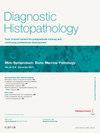Application of artificial intelligence in kidney neoplasms: usability of pathological data in enhancing classification, grading and prognostic and predictive models
引用次数: 0
Abstract
Renal cell carcinoma (RCC) is among the most common human malignancies, gold standard in diagnosis is still histology but poses challenges in classification, grading, reproducibility or identification of predictive markers. The increasing use and availability of artificial intelligence (AI) like machine learning and deep learning methods, rose hope of improving those issues. The literature is expanding rapidly and in such experimental setting promising results were shown in distinguishing RCC subtypes and grades and leveraging digital pathology data in AI-integrated multimodal approaches combining histopathologic, genetic, and clinical data enhancing prognostic and predictive models. However, significant limitations hinder clinical implementation, like missing of prospective evaluation, underrepresentation of rare subtypes and evolving classification systems. Also the "black box" nature of some AI models and resource intensiveness raise concerns about transparency and feasibility.
人工智能在肾肿瘤中的应用:病理数据在增强分类、分级和预后预测模型中的可用性
肾细胞癌(RCC)是最常见的人类恶性肿瘤之一,诊断的金标准仍然是组织学,但在分类、分级、可重复性或预测标志物的识别方面存在挑战。机器学习和深度学习方法等人工智能(AI)的使用和可用性越来越高,为改善这些问题带来了希望。文献正在迅速扩大,在这样的实验环境中,在区分RCC亚型和分级以及利用人工智能集成的多模式方法中结合组织病理学、遗传学和临床数据来增强预后和预测模型的数字病理数据方面显示了有希望的结果。然而,重大的限制阻碍了临床实施,如缺乏前瞻性评估,罕见亚型的代表性不足和不断发展的分类系统。此外,一些人工智能模型的“黑箱”性质和资源集约化也引发了人们对透明度和可行性的担忧。
本文章由计算机程序翻译,如有差异,请以英文原文为准。
求助全文
约1分钟内获得全文
求助全文
来源期刊

Diagnostic Histopathology
Medicine-Pathology and Forensic Medicine
CiteScore
1.30
自引率
0.00%
发文量
64
期刊介绍:
This monthly review journal aims to provide the practising diagnostic pathologist and trainee pathologist with up-to-date reviews on histopathology and cytology and related technical advances. Each issue contains invited articles on a variety of topics from experts in the field and includes a mini-symposium exploring one subject in greater depth. Articles consist of system-based, disease-based reviews and advances in technology. They update the readers on day-to-day diagnostic work and keep them informed of important new developments. An additional feature is the short section devoted to hypotheses; these have been refereed. There is also a correspondence section.
 求助内容:
求助内容: 应助结果提醒方式:
应助结果提醒方式:


